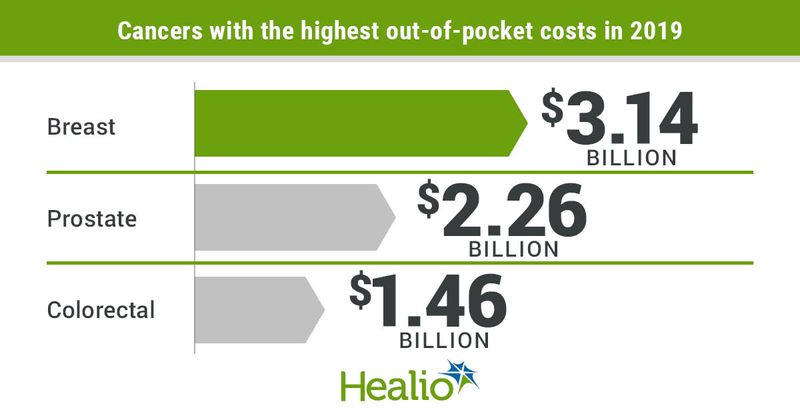For patients, economic burden of cancer care exceeds $21 billion
Click Here to Manage Email Alerts
The economic burden of cancer care in the United States remained heavy for patients, who incurred more than $21 billion in costs in 2019, according to part two of the Annual Report to the Nation on the Status of Cancer.
The total includes $16.22 billion in patient out-of-pocket medical expenses and $4.87 billion in time costs, such as for round-trip travel to care, waiting for care and receiving care.

“Medical financial hardship among patients with cancer and cancer survivors, including problems paying medical bills, financial distress and delays in care due to cost, is increasingly common in the United States,” Robin Yabroff, PhD, MBA, scientific vice president of health services research at American Cancer Society, told Healio. “Our goal of this research was to provide comprehensive estimates of the economic burden of cancer to patients, at both the national and per patient levels in the United States. With rising costs of cancer care, these estimates can be especially useful for patients, providers and health policy makers.”
For part two of the annual report — a collaboration among American Cancer Society, CDC, NCI, and North American Association of Central Cancer Registries that was published in Journal of the National Cancer Institute — researchers used data from the SEER-Medicare database and Medical Expenditure Panel Survey to estimate patient out-of-pocket and time costs associated with cancer care.
Results showed adults aged 65 years and older with Medicare coverage incurred the highest annualized net out-of-pocket costs during the first 12 months after cancer diagnosis ($2,200 for medical services and $243 for prescription drugs) and the 12 months before death among survivors who died ($3,823 for services and $448 for drugs), whereas costs between these phases were lowest ($466 for services and $127 for drugs). Those diagnosed with later-stage disease generally had higher out-of-pocket costs.
An analysis by cancer site showed the highest out-of-pocket costs for cancers with a higher prevalence, including breast ($3.14 billion), prostate ($2.26 billion), colorectal ($1.46 billion) and lung ($1.35 billion).
Cancer-associated net annual time costs, mostly due to hospitalizations and office visits, were $304.3 (95% CI, $257.9-$350.9) for adults aged 18 to 64 years and $279.1 (95% CI, $215.1-$343.3) for those aged 65 years and older.
Oncologists can initiate discussions with patients and families about the anticipated benefits and costs of treatment as part of informed decision-making, Yabroff told Healio.

“In many cases, other members of the care team, such as social workers and financial navigators, may be best suited for more detailed discussions related to patient out-of-pocket costs and time costs,” she said. “They can help connect patients with available services to help minimize financial hardship. Because patient economic burden and financial hardship can increase throughout the course of treatment and survivorship care, these discussions and screening for hardship should be conducted regularly and efforts to connect patients with available services should be documented and evaluated.”
References:
Annual Report to the Nation Part 2: Patient economic burden of cancer care more than $21 billion in the United States in 2019. https://www.cancer.gov/news-events/press-releases/2021/annual-report-nation-part-2-economic-burden?cid=eb_govdel. Published Oct.26, 2021. Accessed Oct. 26, 2021.
Yabroff KR, et al. J Natl Cancer Inst. 2021;doi:10.1093/jnci/djab192.

